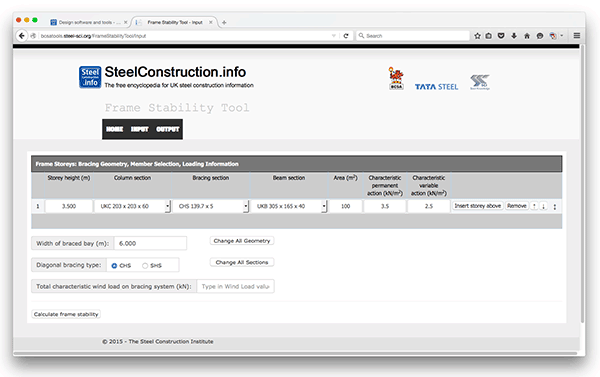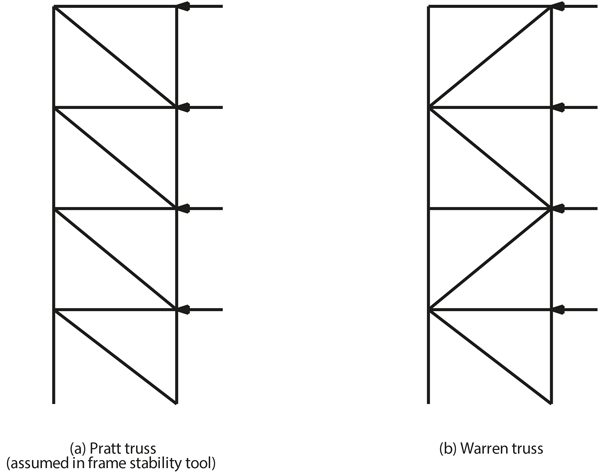Technical
AD 282: Frame Stability and Load Combinations
This advisory desk note reminds designers that in-plane stability varies with each load combination considered. This is because the loads applied to a structure are different for each load combination. In BS 5950-1: 2000, frame stability is generally considered with reference to λcr which is calculated using Notional Horizontal Forces (NHF). Because the partial factors change between load combinations, the NHF change, and therefore the value of λcr is different in each load combination. Comments are made on both multi-storey structures and portal frames.
Multi-storey structures.
Four load combinations may be considered for multi-storey frames. (See table below)
Clearly, since the NHF are 0.5% of the factored dead and imposed loads, the maximum NHF are found in combination 1. In this combination, λcr will be the minimum (i.e. the most sensitive combination for second-order effects) and if the frame is sway-sensitive in this combination, kamp (see 2.4.7.2) will be at a maximum. Conservatively, frame stability may be considered in load combination 1, and if the frame is found to be sway-sensitive under this load combination, the resulting kamp may be used in all load combinations. However, for economy of steel, it will often be advantageous to investigate frame stability in the other load combinations, as the NHF will be smaller, λcr will be larger (i.e. less sensitive), and kamp will be smaller, or 1.0.
Portal frames
When checking the in-plane stability of portal frames, three options are available in BS5950-1: 2000, as described in Clause 5.5.4.1. The sway-check method, described in Clause 5.5.4.2, utilises NHF, with some specific rules for portal frames.
In Clause 5.5.4.2.1 the Standard states that the NHF applied to the top of each column are to be taken as 0.5% of the vertical reaction at the base of the respective column for the relevant load case. Note that the NHF should be applied at each column top and not as a single load at the top of one column.
In load combination 1, the vertical reactions are only due to the ‘gravity’ loads and the NHF at each column top may be calculated from the product of the roof area carried by a column and the factored vertical load.
When calculating λsc in load combinations with horizontal load (see Clause 5.5.4.2.3), the NHF should be recalculated, since the factors on the dead and imposed loads reduce. The Standard encourages this by referring to the horizontal deflections under the NHF ‘for the relevant load case’. However, the contribution that the wind load makes to the vertical load and therefore the NHF must not be ignored, as this can be significant in a portal frame. By following the advice in the Standard to take the NHF as 0.5% of the vertical reaction at the base of the column, the effect of wind on the vertical loads and on the NHF will automatically be taken into account.











